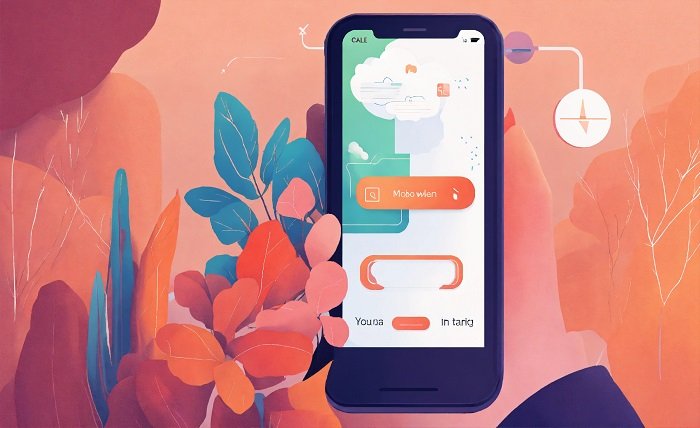When you think about user interface design, the first thing that probably comes to mind is how things look, the colors, buttons, and layout. But there’s more to it than aesthetics.
Good UI design taps into psychology to create experiences that users actually enjoy, find intuitive, and want to keep coming back to. Understanding human behavior, how people think and interact, can be used intelligently to craft interfaces that not only look good but also make people feel good when they use them.
The Power of Visual Hierarchy
Have you ever used a website or app and found yourself immediately knowing where to click, even though you’ve never seen it before? That’s the magic of visual hierarchy. We naturally tend to pay attention to bigger and bolder elements first. It’s like how we read — our eyes don’t go straight to the middle of a page. They follow a pattern. By using visual cues, designers can guide users effortlessly to where they need to go.
- Size matters: Big, bold headlines grab your attention first. That’s why the most important message on any page is usually the largest one.
- Color is emotional: Red can grab your attention and trigger urgency, while blue can calm you down and build trust. Colors aren’t just random; they’re a tool for shaping how users feel.
- Where things go matters too: Ever notice how people typically scan websites in an “F” shape? Designers use that to place the most important stuff where people’s eyes are naturally drawn first. It’s a small trick, but it works.
Reducing Cognitive Load
We all know the feeling of opening a website or app and immediately feeling overwhelmed. Too much going on, too many choices, and suddenly, nothing seems worth clicking. Cognitive load is the term for how much mental effort it takes to use something. Great UI design keeps this low so users can focus on what really matters, without getting distracted or frustrated.
- Consistency is key: When buttons, menus, and other elements are in the same spot every time, users can move quickly. They don’t have to think too hard about where to click.
- Show only what’s needed: Ever been on a form that asks for too much information upfront? By showing only the necessary details at each step (like how many steps are left in a process), users feel less stressed.
The goal? Let people do what they want to do, without making them think too much about how to do it.
Instant Feedback: Letting People Know You’re Paying Attention
Ever clicked a button on a website and wondered if anything happened? Frustrating, right? Immediate feedback is something we expect in real life, and it’s no different when we interact with a website or app. If you take an action, you want to know right away that something’s happening.
- Visual cues: A button that changes color when clicked or a “Thank You” message after submitting a form helps users feel like they’ve done something right. It’s reassuring.
- Preventing mistakes: Feedback doesn’t just mean telling people when things go well. It’s also about guiding them when they mess up. Whether it’s a red error message or a helpful tooltip, it gives users the info they need to get back on track.
People like feeling in control. Immediate feedback does exactly that — it keeps them engaged and reassured that they’re on the right path.
Simplicity Drives Satisfaction
Think of your favorite app. What do you like about it? Likely, it’s simple to use. The buttons are in the right place, the layout’s clear, and you can quickly find what you need without too much thinking. This is what psychology calls the principle of least effort: People gravitate toward simplicity because it requires less mental effort to use. And when things are easy, they feel better.
- Minimalism works: You don’t need flashy animations or complicated design patterns to get the point across. A clean interface with easy-to-understand elements makes users feel calm and in control.
- Clear and direct navigation: People don’t want to dig around for what they need. If your app or website is easy to navigate, users won’t get frustrated or lost.
People use apps to get things done, not to be overwhelmed by unnecessary features. Simple, intuitive designs make users happy, and that happiness leads to greater loyalty.
Closing Thoughts
In the end, user interface design is more than just making things look nice. It’s about creating an experience that feels intuitive, keeps users engaged, and makes them feel confident in what they’re doing. By using principles of psychology — from visual hierarchy to cognitive load reduction — designers can craft interfaces that guide users naturally, provide quick feedback, and help them get things done with ease.
So, the next time you interact with an app or website that just clicks, remember: It’s not magic. It’s smart design based on how we think and act.
